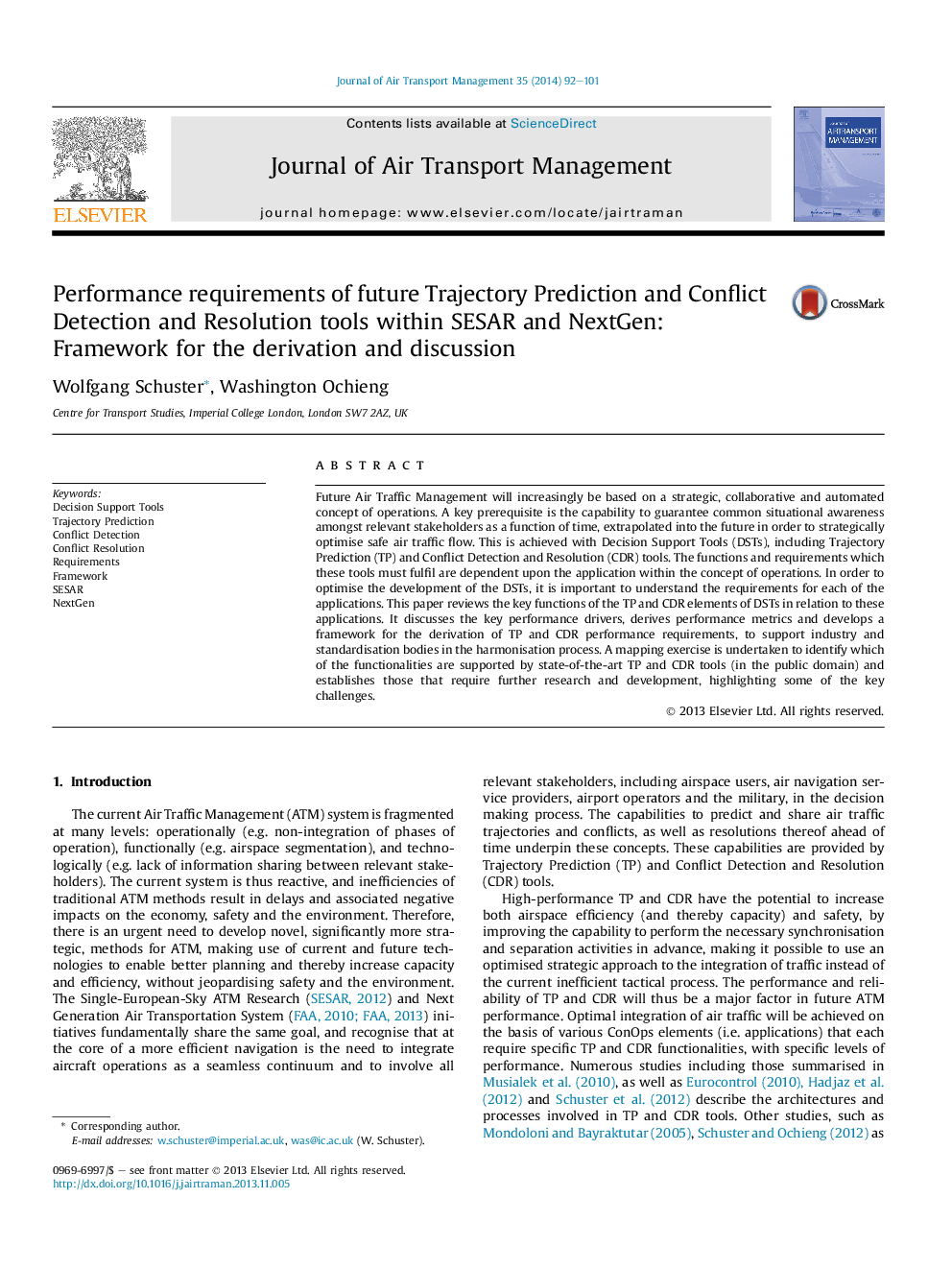| کد مقاله | کد نشریه | سال انتشار | مقاله انگلیسی | نسخه تمام متن |
|---|---|---|---|---|
| 1030876 | 1483582 | 2014 | 10 صفحه PDF | دانلود رایگان |

• At the core of future automation systems are Trajectory Prediction (TP) and Conflict Detection and Resolution (CDR) tools.
• To-date there is no framework for the derivation of the (application-dependent) technical requirements of such tools.
• This paper develops such framework; it further derives the technical requirements for such tools for a sample application.
• It discusses the performance of existing tools in the public domain with respect to these requirements.
• Results show that the performance of current tools is not sufficient for a majority of applications within SESAR & NextGen.
Future Air Traffic Management will increasingly be based on a strategic, collaborative and automated concept of operations. A key prerequisite is the capability to guarantee common situational awareness amongst relevant stakeholders as a function of time, extrapolated into the future in order to strategically optimise safe air traffic flow. This is achieved with Decision Support Tools (DSTs), including Trajectory Prediction (TP) and Conflict Detection and Resolution (CDR) tools. The functions and requirements which these tools must fulfil are dependent upon the application within the concept of operations. In order to optimise the development of the DSTs, it is important to understand the requirements for each of the applications. This paper reviews the key functions of the TP and CDR elements of DSTs in relation to these applications. It discusses the key performance drivers, derives performance metrics and develops a framework for the derivation of TP and CDR performance requirements, to support industry and standardisation bodies in the harmonisation process. A mapping exercise is undertaken to identify which of the functionalities are supported by state-of-the-art TP and CDR tools (in the public domain) and establishes those that require further research and development, highlighting some of the key challenges.
Journal: Journal of Air Transport Management - Volume 35, March 2014, Pages 92–101